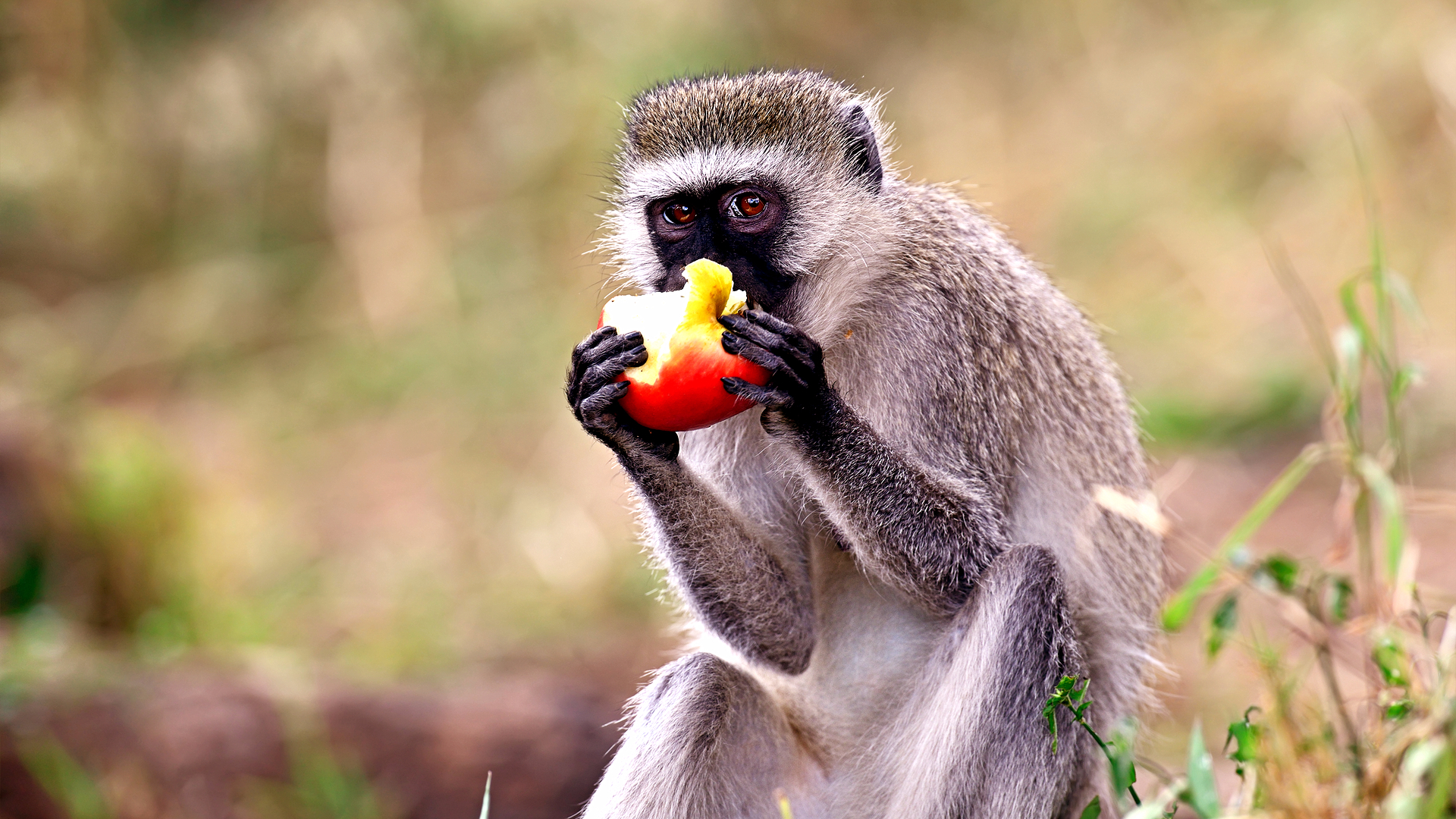- Home
- Conservancy
- The vervet monkey
WHERE TO SEE The vervet monkey
Description
The vervet monkey has a black face with a white fringe of hair, while the overall hair color is mostly grizzled-grey. The species exhibits sexual dimorphism; the males are larger in weight and body length. Adult males weigh between 3.9 and 8.0 kg (8.6 and 17.6 lb), averaging 5.5 kg (12 lb), and have a body length between 420 and 600 mm (17 and 24 in), averaging 490 mm (19 in) from the top of the head to the base of the tail. Adult females weigh between 3.4 and 5.3 kg (7.5 and 11.7 lb) and average 4.1 kg (9.0 lb), and measure between 300 and 495 mm (11.8 and 19.5 in), averaging 426 mm
Fun Facts
In addition to very interesting behavioral research on natural populations, vervet monkeys serve as a nonhuman primate model for understanding genetic and social behaviors of humans. They have been noted for having human-like characteristics, such as hypertension, anxiety, and social and dependent alcohol use. Vervets live in social groups ranging from 10 to 70 individuals, with males changing groups at the time of sexual maturity.
The most significant studies done on vervet monkeys involve their communication and alarm calls, specifically in regard to kin and group recognition and particular predator sightings. When males reach sexual maturity, they move to a neighboring group. Often, males will move with a brother or peer, presumably for protection against aggression by males and females of the resident group. Groups that had previously transferred males show significantly less aggression upon the arrival of another male. In almost every case, males migrate to adjacent groups.
This obviously increases benefits in regard to distance traveled, but also reduces the amount of genetic variance, increasing the likelihood of inbreeding. Females remain in their groups throughout life. Separate dominance hierarchies are found for each sex. Male hierarchies are determined by age, tenure in the group, fighting abilities, and allies, while female hierarchies are dependent on maternal social status. A large proportion of interactions occur between individuals which are similarly ranked and closely related. Between unrelated individuals, there is female competition for grooming members of high-ranking families, presumably to gain more access to resources.
These observations suggest individual recognition is possible and enables discrimination of genetic relatedness and social status. Interactions between different groups are variable, ranging from highly aggressive to friendly. Furthermore, individuals seem to be able to recognize cross-group vocalizations, and identify from and to which monkey each call is intended, even if the call is made by a subadult male which is likely to transfer groups. This suggests the members within a group are actively monitoring the activity of other groups, including the movement of individuals within a group.[16] Within groups, aggression is directed primarily at individuals that are lower on the hierarchy. Once an individual is three years or older, it is considerably more likely to be involved in conflict. Conflict often arises when one group member shows aggression toward a close relative of another.
Further, both males and females may redirect aggression towards individuals in which both had close relatives that were previously involved in a conflict. This suggests complex recognition not only of individuals, but also of associations between individuals. This does not suggest recognition of other's individual kinship bonds is possible, but rather that discrimination of social relationships does occur.
